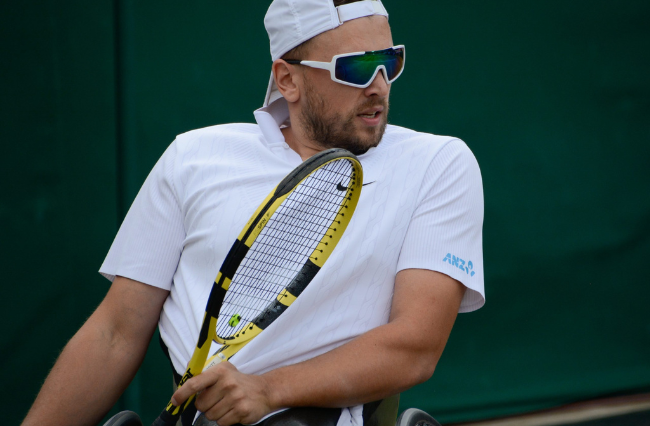More than 4 million people live with a disability in Australia, according to the Australian Institute of Health and Welfare (AIHF). While steps have been made to ensure people living with disability have access to playing sport, are events also ensuring they can join the crowds of Australians who love live sports experiences?
Some sports events and venues have been putting in the work to answer this very question. At the 2023 FIFA Women’s World Cup, an Audio-Descriptive Commentary (ADC) service was used for the first time at the event. It provided blind and partially sighted fans narration, describing all significant visual information from the live match. This information includes physical gestures such as body language and facial expressions. This was the first instance this type of technology had been provided to football fans in Australia.
In September 2023, Marvel Stadium announced in a statement, that all staff had undergone Sensory Inclusive Training 101 with KultureCity and that the stadium is now an official accredited sensory venue. Organisers of the recent Melbourne Grand Prix made access and inclusion a top priority for the event. They worked with Get Skilled Access, which helps organisations and events build a pathway to meet their objectives in relation to access and inclusion. Consultants meet with event organisers and create a co-design for how events like the Grand Prix and Australian Open can be more accessible and inclusive for people living with a disability. Get Skilled Access also provide an auditing service which creates a report for an organisation that outlines what issues need to be addressed to enhance the potential of accessible and inclusive opportunities.
This year the Australian Open launched their All Abilities Day in 2023, in the hope that an event like this would show the world how people with a disability can thrive in all aspects of tennis. Head of Diversity and Inclusion at Tennis Australia Kerry Tavrou oversees the management and success of the All Abilities Day. He says it was vital for Tennis Australia to showcase diversity amongst their employees.
“[All Abilities Day] is about really sharing our message about you could be anything you want to be through tennis,” Tavrou tells upstart.
Tennis Australia promotes access and inclusion through this event with a focus on staff, athletes and fans, with more than 50 people with a disability employed to work at the Australian Open, according to Tavrou.
One of the big initiatives on All Abilities Day is showcasing elite athletes with a disability. Dylan Alcott was one of the many celebrities that played in showcase matches on All Abilities Day in January alongside Izzy Cairns, one of the top deaf players in the country. Archie Graham, who is currently ranked number one for men’s singles with an intellectual impairment and is a five-time tennis singles world champion, also played in front of large crowds.
Tavrou says it was empowering seeing Alcott and the other players engage with young fans who also live with a disability, and that it was important to highlight the talent we have in Australia. He says this inspires people, especially youth living with a disability, that it is possible to achieve greatness in sport.
“We have the world number one player with an intellectual disability and we’ve had a history of doing really well in wheelchair tennis,” Tavrou says.
“[At] the last Australian Open, we had a deaf and hard of hearing tournament and we had the women’s winner.”
Over time, the Australian Open has implemented a variety of recommendations from Get Skilled Access to make the grand slam more accessible. Tavrou says more recently Tennis Australia introduced two sensory rooms and a quiet room at the Australian Open for people to retreat to if they get overwhelmed by the noise and busyness of the grand slam.
“We have programs and accessibility tools for people with blind and low vision, people with deaf and hard of hearing and who have physical disabilities,” Tavrou says.
Initiatives like these boost fan attendance and support. Since the initial All Abilities Day, Tavrou said the participation of people living with a disability in grassroots programs such as Hot Shots has increased. Attendance at major events has also seen a steady incline.
Tavrou says that Tennis Australia aims that by continuing the newly cemented tradition of All Abilities Day, they raise awareness and celebrate how all people from different walks of life can thrive in their sport.
“The day itself is really about telling the world that the Australian Open is a welcoming and inclusive space as a fan, and as a player in our pathways and as an employee.”
Article: Harrison Shortis is a second-year Bachelor of Media and Communications (Journalism) student at La Trobe University. You can follow him on Twitter @HarryShortis1
Photo: Dylan Alcott by Carine06 is available HERE and is used under a Creative Commons Licence. This image has not been modified.






